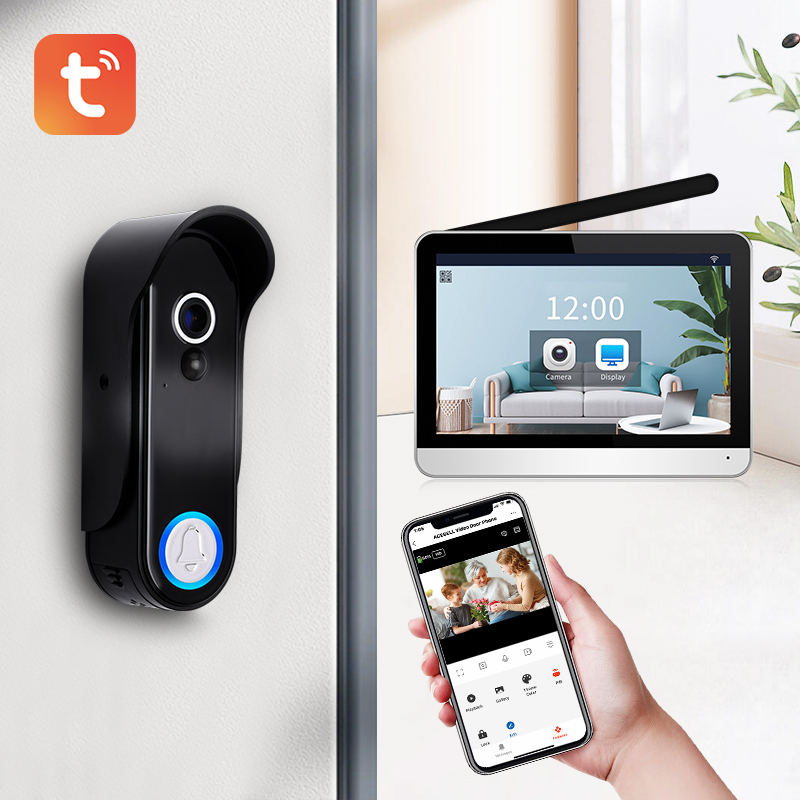智能门铃:节能与智能供电的技术创新
Time:2024-04-20 10:43:43 Views:52次
Introduction:
As the smart home market continues to evolve rapidly, smart doorbells have become increasingly popular among consumers for home security monitoring systems. However, this popularity also brings higher demands for energy efficiency and power supply. This article will delve into the technologies of energy-saving modes, low-power design, smart charging techniques, choice of power supply methods, and intelligent management systems in smart doorbells, aiming to provide technical support and guidance for the development of smart doorbells.
Energy-saving mode:
The energy-saving mode of smart doorbells is achieved through intelligent control systems. Its main function is to automatically enter the energy-saving mode when the doorbell is not in use for a long time, shutting down or reducing the power consumption of some functions such as video monitoring and network connection, to extend battery life or reduce grid power consumption. For example, when the doorbell system detects no human activity for a period of time, it automatically shuts down the video monitoring function and enters sleep mode to reduce power consumption.
Low-power design:
In the hardware design stage of smart doorbells, using low-power components and energy-saving designs is crucial. For example, selecting low-power processors and sensors, optimizing circuit designs, and using efficient power management chips. Additionally, optimizing software algorithms, such as sleep mode and timed wake-up techniques, further reduces system power consumption.
Smart charging technology:
Smart doorbells typically use rechargeable batteries for power, and smart charging technology is essential to ensure safe charging and prolong battery life. Technologies such as constant current charging, constant voltage charging, and temperature-controlled charging are widely used. For example, the charging circuit of smart doorbells can adjust the charging current and voltage in real-time based on the battery's state to ensure safe and reliable charging, avoiding overcharging or over-discharging, and extending battery life.
Choice of power supply methods:
Smart doorbells can be powered by various methods, such as battery power, power adapters, or solar power. Battery power provides portability and installation flexibility but requires regular replacement or recharging, necessitating reasonable battery management strategies. Power adapters can provide continuous and stable power by directly connecting to power outlets but are limited by the location of power outlets. Solar power is an environmentally friendly and economical option, collecting solar energy through solar panels and converting it into electricity for doorbell system use.
Intelligent management system:
Smart doorbells are equipped with intelligent management systems that can automatically adjust power management strategies based on usage and environmental conditions. For example, the system can dynamically adjust power consumption based on the doorbell's workload and battery level to improve system efficiency and prolong battery life. Additionally, the intelligent management system can optimize energy-saving modes and power supply strategies in real-time through remote monitoring and intelligent analysis to adapt to different usage scenarios and requirements.
Conclusion:
Innovations in energy efficiency and intelligent power supply technology for smart doorbells are essential for the development of the smart home industry. By applying technologies such as energy-saving modes, low-power design, smart charging technology, choice of power supply methods, and intelligent management systems, smart doorbells can achieve more efficient, stable, and reliable operation, providing users with a better user experience and convenience. With continuous technological advancements and innovations, it is believed that smart doorbells will develop more energy-saving and power supply technologies in the future, contributing to the popularization and development of smart homes.
Chinese Website——www.dgjiasong.com

NEXT:智能门铃:实现智慧家居安全的关键
PREV:智能门铃:PIR运动检测与实时视频分析